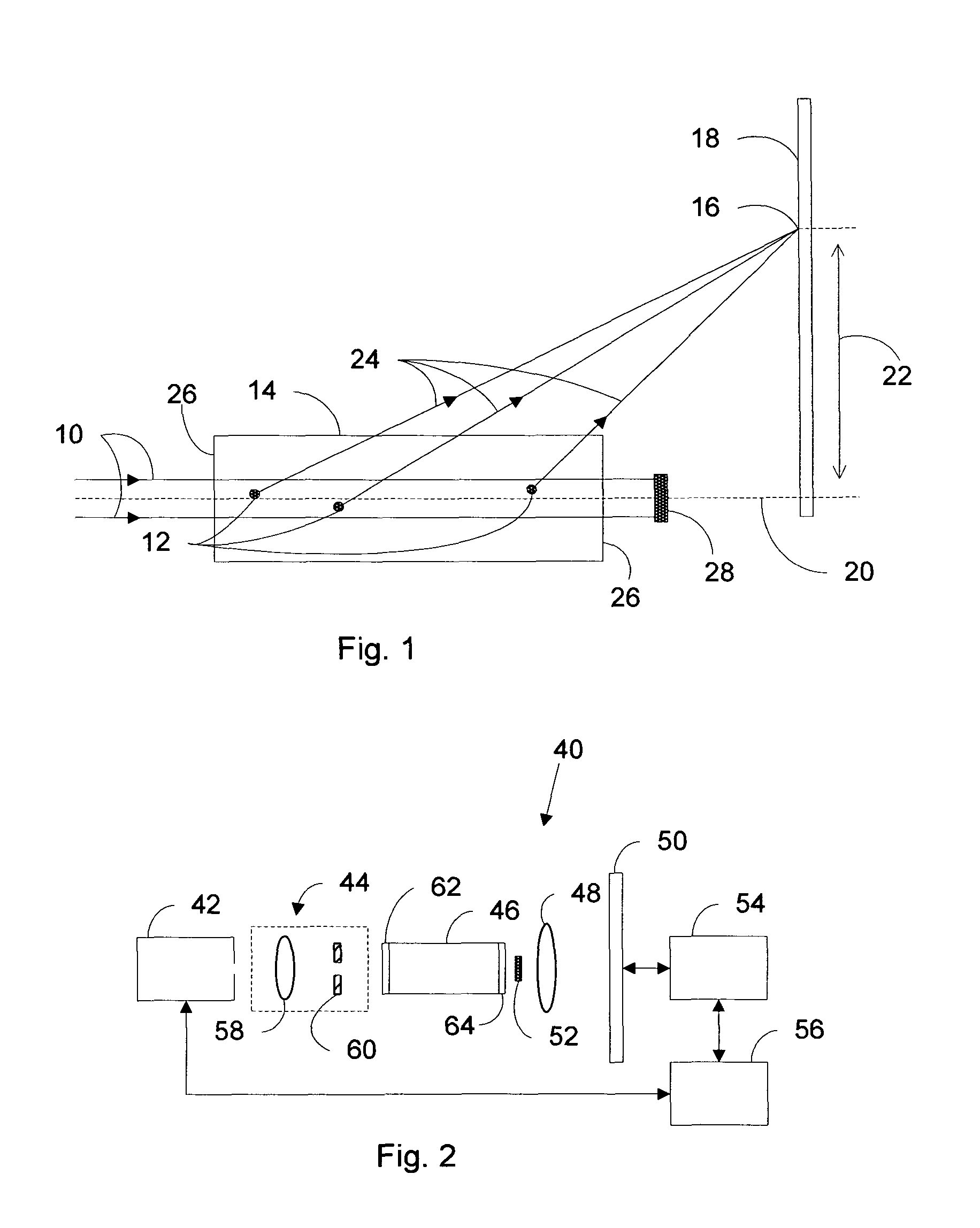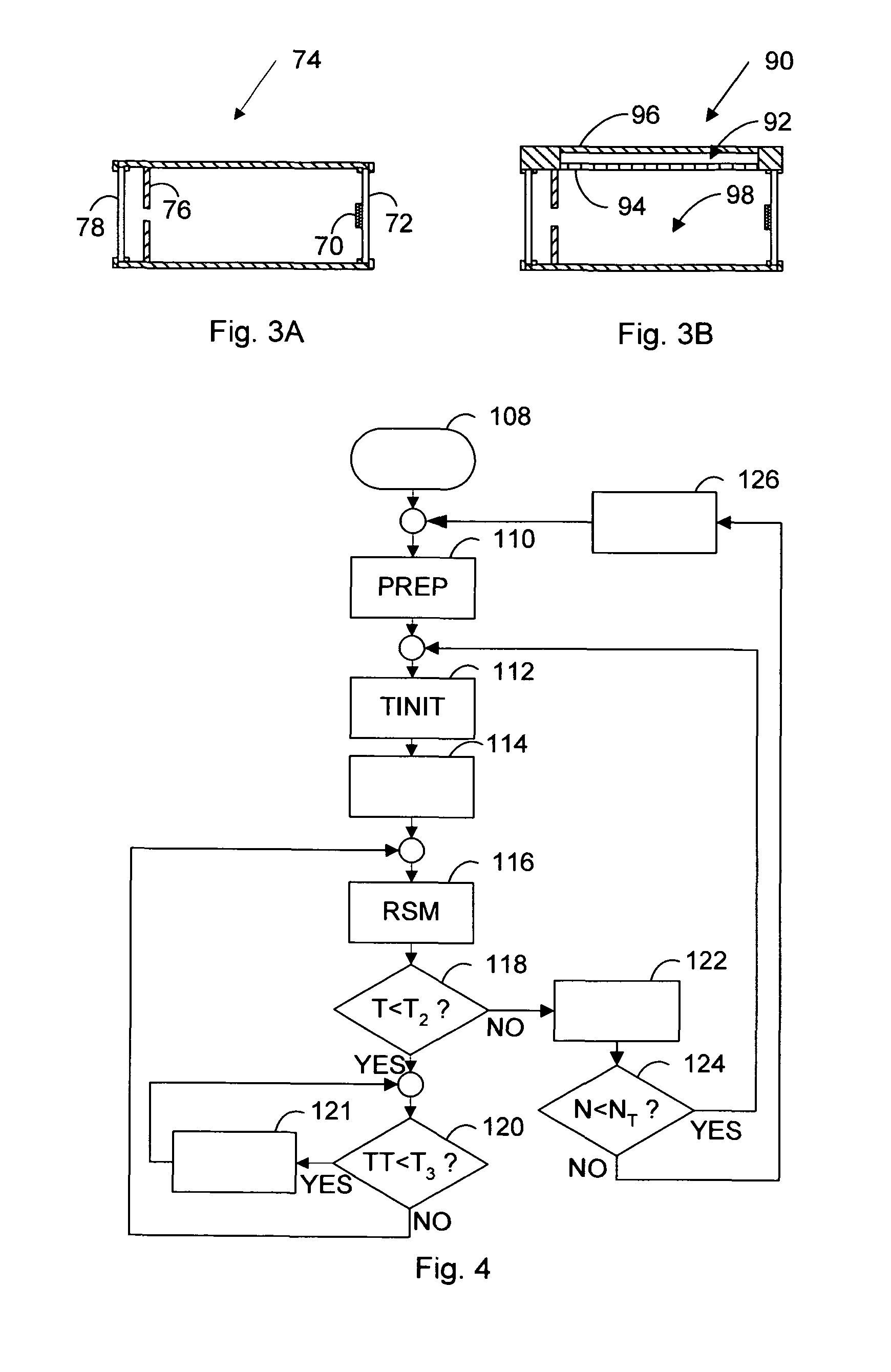Counting bacteria and determining their susceptibility to antibiotics
a technology of bacteria and susceptibility to antibiotics, applied in the field of biological fluid detection, can solve the problems of time and resource consumption, requiring skilled operators, and implementing this method is not satisfactory, and fails to detect bacteria that do not generate specific products
- Summary
- Abstract
- Description
- Claims
- Application Information
AI Technical Summary
Benefits of technology
Problems solved by technology
Method used
Image
Examples
example 1
[0047]A simulated analysis of speckles images was conducted. A synthetic model of urine was prepared in which 2-4 μm diameter spheres having the
[0048]same dielectric constant as those of bacteria represent bacteria. The particles are randomly distributed in a uniform medium matching an aqueous solution of salt. Randomly distributed spheres whose radius is smaller than one micron and having a matching dielectric constant represent salt particles. The synthetic urine is contained within a cylinder having a diameter of 0.5 millimetre (mm) and a height of 55 mm. This cylinder conforms a volume separating between the aperture of diaphragm 76 and light obscuring means 70 within cuvette 74 shown in FIG. 3A to which reference is again made. The particles are coherently (spatially and temporally) illuminated such as by means of a laser diode. The intensity of scattered light measured at a point across the face of the light detector is calculated employing coherent ray tracing in which the in...
example 2
[0050]An analysis of the dynamics of a simulated speckles image employing the same physical models and approach as is described in example 1 hereinabove was conducted. Reference is now made to FIG. 6 showing exemplary temporal behaviours of the intensity of the scattered light calculated at a point on the face of the light detector. The point is spaced 1 mm aside from the optical axis of the system. The particles suspended in the synthetic urine are moving in uniformly distributed directions at velocities having normally distributed magnitudes. Plot 130 shows a simulated intensity-time profile in which the mean value of the magnitude of the velocities is 0.25 μm / sec. Plot 132 shows another simulated intensity-time profile in which the mean value of the magnitude of the velocities is 5 μm / sec. The signal intensity received by the light detector at this point is measured in arbitrary units (A.U.). The time is given in seconds (SEC). The scale of the signal intensity is linear and Plot...
example 3
[0052]An exemplary experiment displaying the features of the method and system of the invention related to the dynamics of the light scattered from fluids containing bacteria is described below. Two samples are taken from the same specimen of urine, which is free from bacteria. A calibrated quantity of E-coli is introduced into one of these samples, such that the bacterial concentration in the sample is 106 colony-forming units per milliliter (CFU / ml). A quantity pf particles of a size of 2 μm is introduced into the other sample of urine, such that the concentration of the particles equals the bacterial concentration of the first sample. These particles are made of polymethylmethacrylate (PMMA). The two samples are mechanically filtered to exclude particles larger than 5 μm. The samples are examined with a system for detecting bacteria of the invention whose light source consists of a laser diode of 650 nanometers (nm) having a power of 0.2 milliwatt (mw) and a beam diameter of 0.5 ...
PUM
| Property | Measurement | Unit |
|---|---|---|
| surface roughness | aaaaa | aaaaa |
| velocity | aaaaa | aaaaa |
| surface roughness | aaaaa | aaaaa |
Abstract
Description
Claims
Application Information
 Login to View More
Login to View More - R&D
- Intellectual Property
- Life Sciences
- Materials
- Tech Scout
- Unparalleled Data Quality
- Higher Quality Content
- 60% Fewer Hallucinations
Browse by: Latest US Patents, China's latest patents, Technical Efficacy Thesaurus, Application Domain, Technology Topic, Popular Technical Reports.
© 2025 PatSnap. All rights reserved.Legal|Privacy policy|Modern Slavery Act Transparency Statement|Sitemap|About US| Contact US: help@patsnap.com



